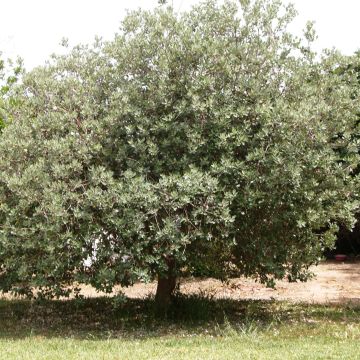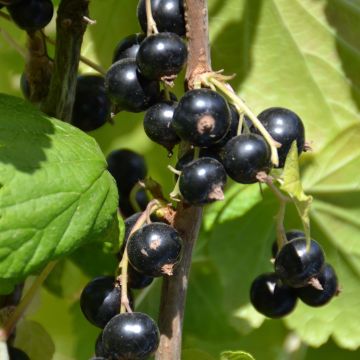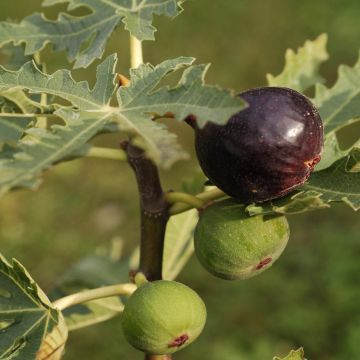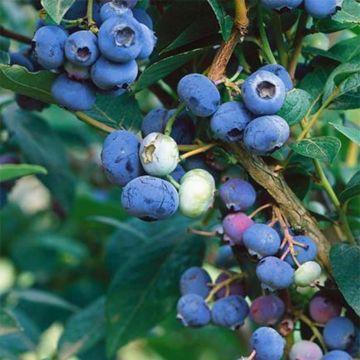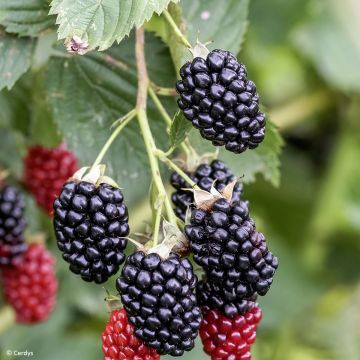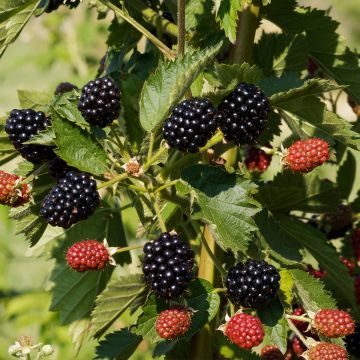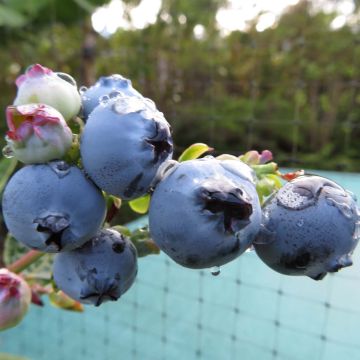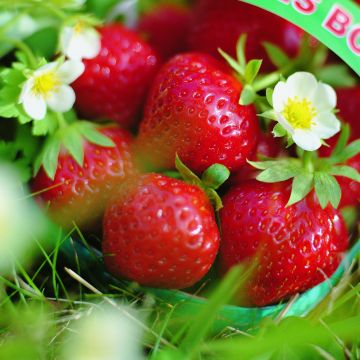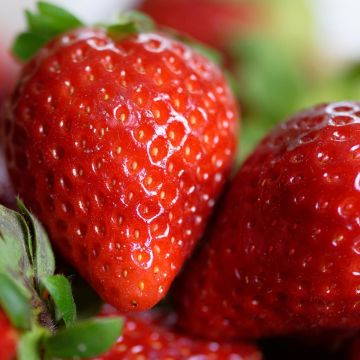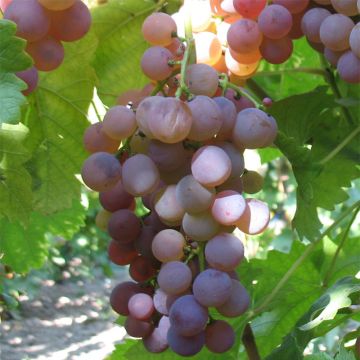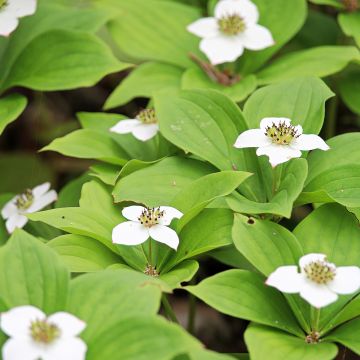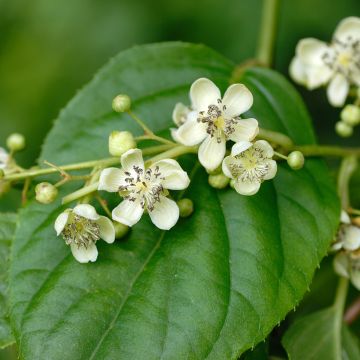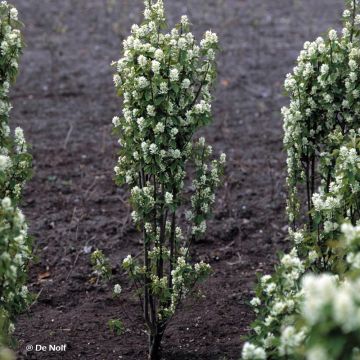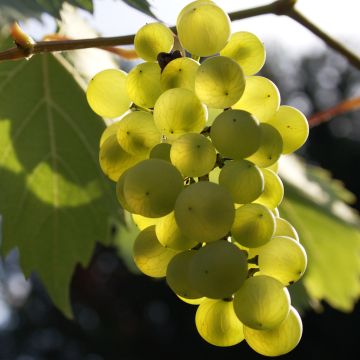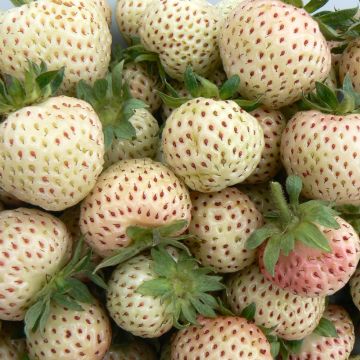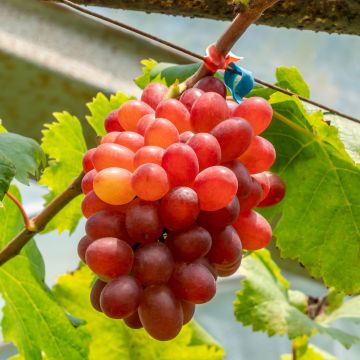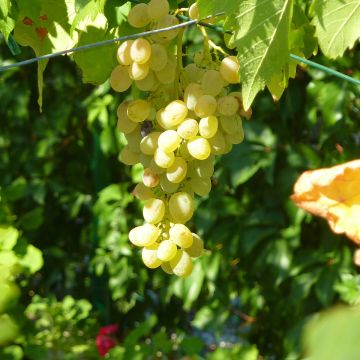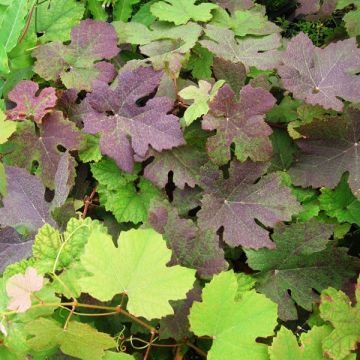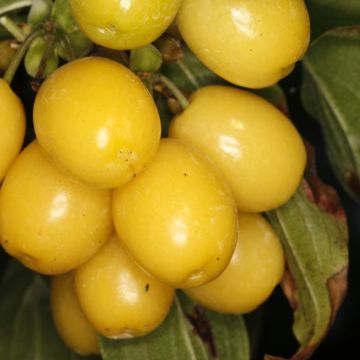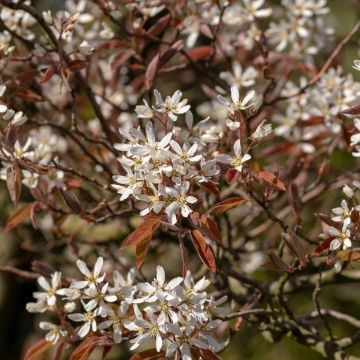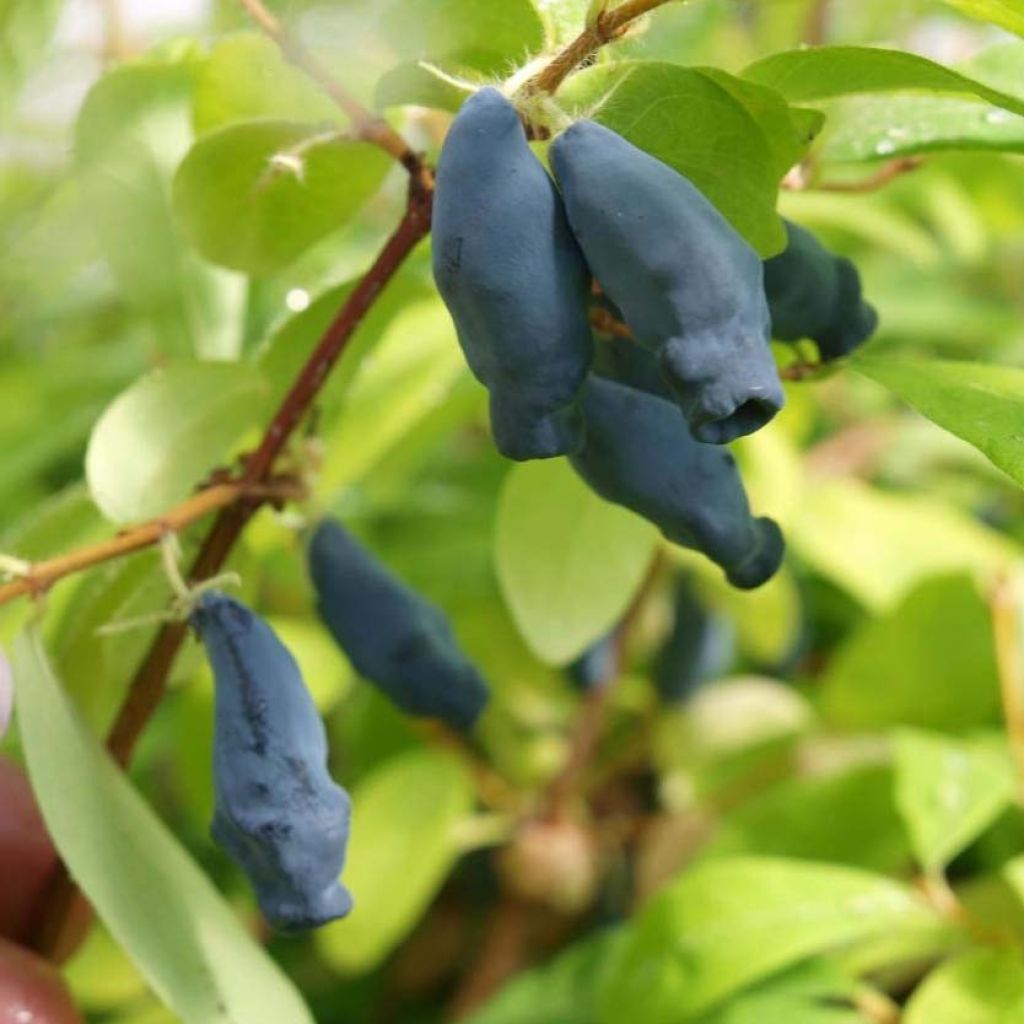

Lonicera kamtschatica Eisbär - Honeyberry
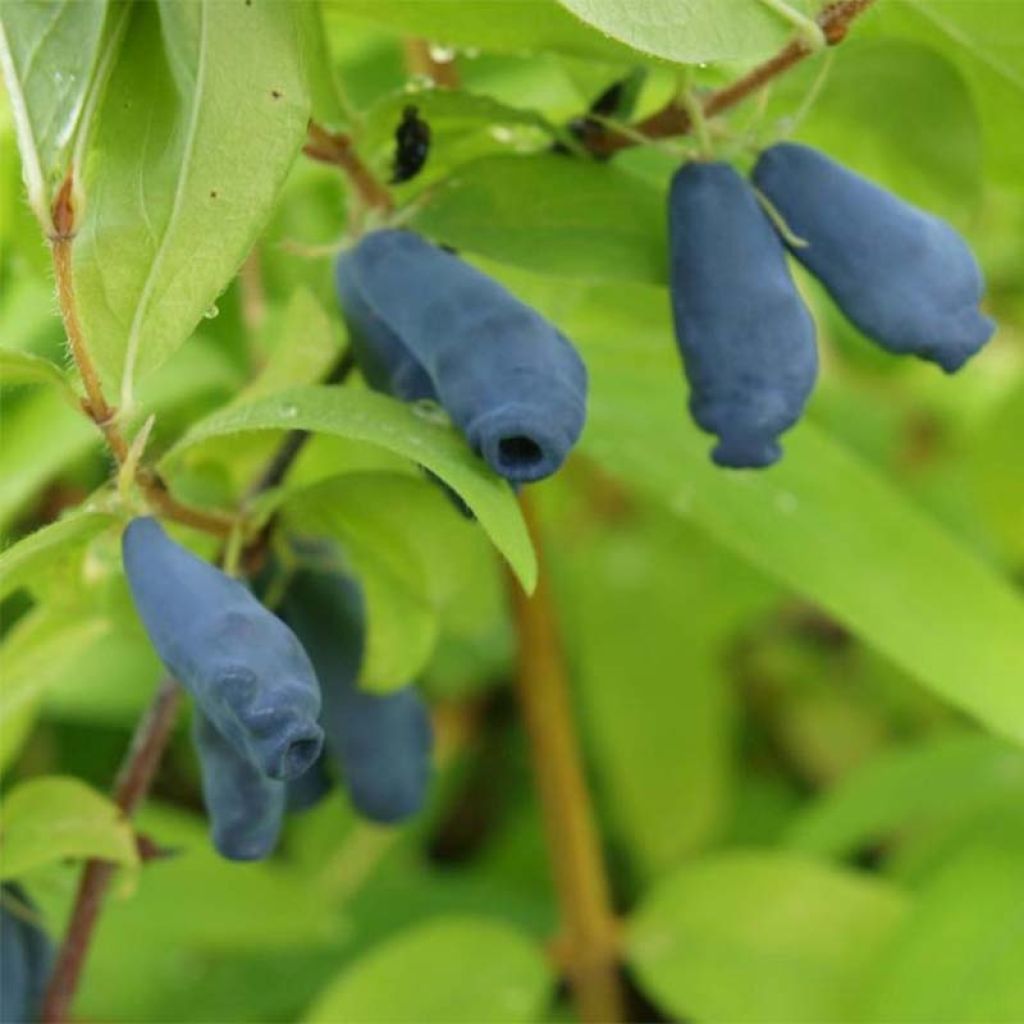

Lonicera kamtschatica Eisbär - Honeyberry
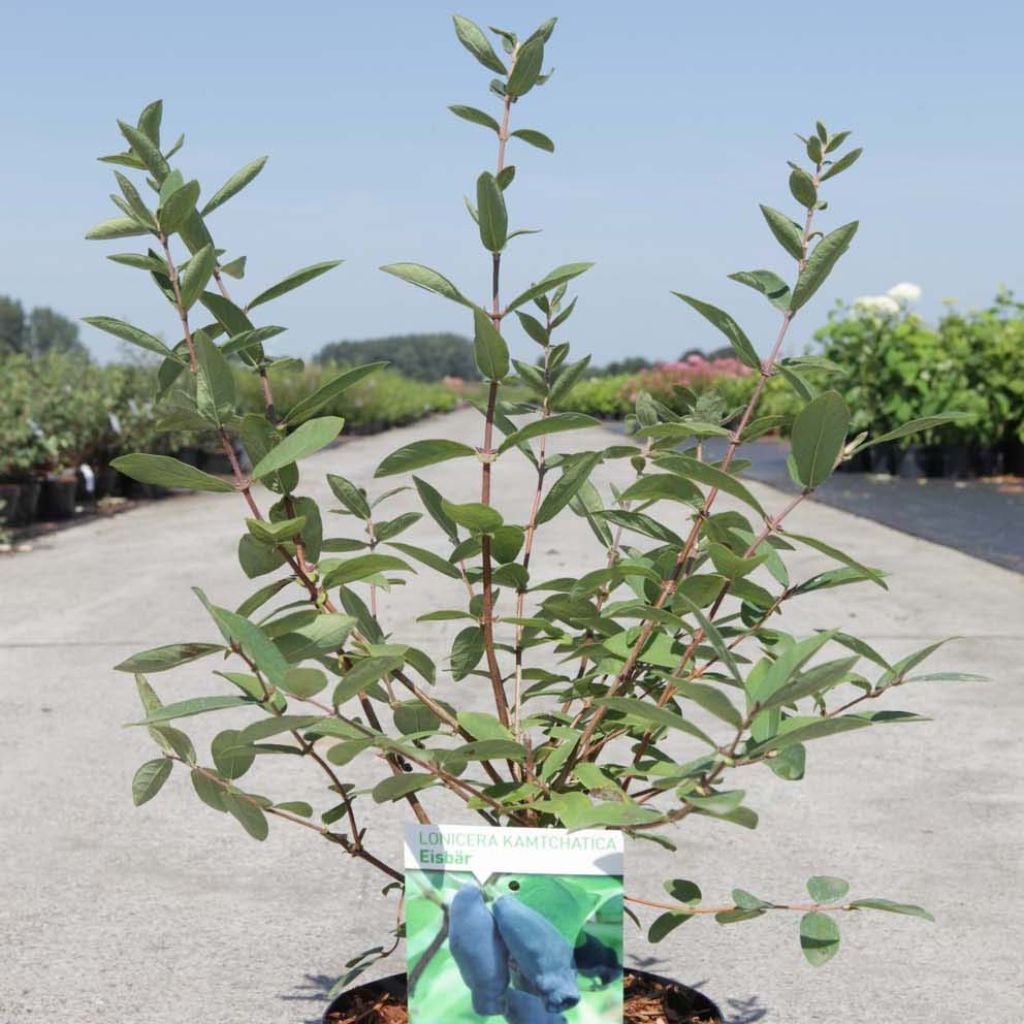

Lonicera kamtschatica Eisbär - Honeyberry
Lonicera kamtschatica Eisbär - Honeyberry
Lonicera kamtschatica Eisbär® 'Polar Bear'
Blue Honeysuckle, Honeyberry, Sweetberry Honeysuckle, Haskap
This item cannot be shipped to the selected country
Delivery charge from €5.90
More information
Schedule delivery date,
and select date in basket
This plant carries a 24 months recovery warranty
More information
We guarantee the quality of our plants for a full growing cycle, and will replace at our expense any plant that fails to recover under normal climatic and planting conditions.
From €5.90 for pickup delivery and €6.90 for home delivery
Express home delivery from €8.90.

Does this plant fit my garden?
Set up your Plantfit profile →
Description
Lonicera kamtschatica Eisbär is a recent German variety, selected for its high yield of flowers and fruit. It comes from a shrubby honeysuckle called Sweetberry, and is grown for its edible fruits of beautiful, elongated size that are fleshy and particularly tasty. This shrub produces abundant cream-white flowering in spring, delicately scented, followed by the formation of numerous vitamin-rich fruits that can be consumed fresh or made into jellies and jams. This honeysuckle is a small fruit bush that is very versatile; it will find its place in a culinary garden or flowering hedge, including in a small garden.
Also called "Blue Honeysuckle", like all honeysuckles, Lonicera caerulea ssp. kamtschatica is a shrubby species of the Caprifoliaceae family. It is native to Eastern Europe, especially Russia and Siberian Asia, from Kamchatka to Magadan to Sakhalin Island. Indigenous populations have known and been consuming this honeysuckle for a long time. It is a plant that prefers non-calcareous, humus-rich and moist soil, and is extremely resistant to cold weather.
The 'Eisbär' honeysuckle (also known as 'Polar Bear') shows a rather slow growth and an erect bushy habit. It forms an average-sized bush, about 1.50m (4 ft 11 in) tall and 1.20m (3 ft 11 in) wide, and has small deciduous leaves that turn grey by the end of August before falling early in the season, in September. Measuring 3 to 8cm (1.2 to 3.1 in) long, they oval-shaped, dark green and slightly hairy. In March, numerous tubular flowers, 3cm (1.2 in) long, open on the 1-year-old stems, blooming into cream-white star-shaped flowers that have a very pleasant fragrance. They have two large central lips and the stamens are visible. The flowers, as well as the young shoots, are perfectly resistant to temperatures around -10°C. In May (or June depending on the climate), the flowers give way to beautiful blue, frosted, cylindrical and slightly bumpy berries, measuring up to 4cm (1.6 in) long and 1.5cm (0.6 in) in diameter. They resemble large blueberries in flavour. Edible and rich in antioxidants, vitamins B and C, they can be eaten fresh, in jams or jellies.
Hardy down to -35°C, Lonicera Eisbär can be planted, in an informal hedge or a culinary hedge for gourmets, mixing it with raspberries, currants, thornless blackberries, blueberries, cranberries, serviceberries, or even Goji berries (Lycium barbarum), in a sunny location and in fertile, moist and non-limestone soil. You will enjoy its fragrance even more in a container on a terrace! Ornamental shrubs such as lilacs, mock oranges, abelias or Kolkwitzia can serve as a backdrop, but be careful not to let their root system encroach into the space of our blue honeysuckle.
Tip: For better fruiting, plant it in pairs or groups of three as this will enhance the pollination rate.
Report an error about the product description
Lonicera kamtschatica Eisbär - Honeyberry in pictures
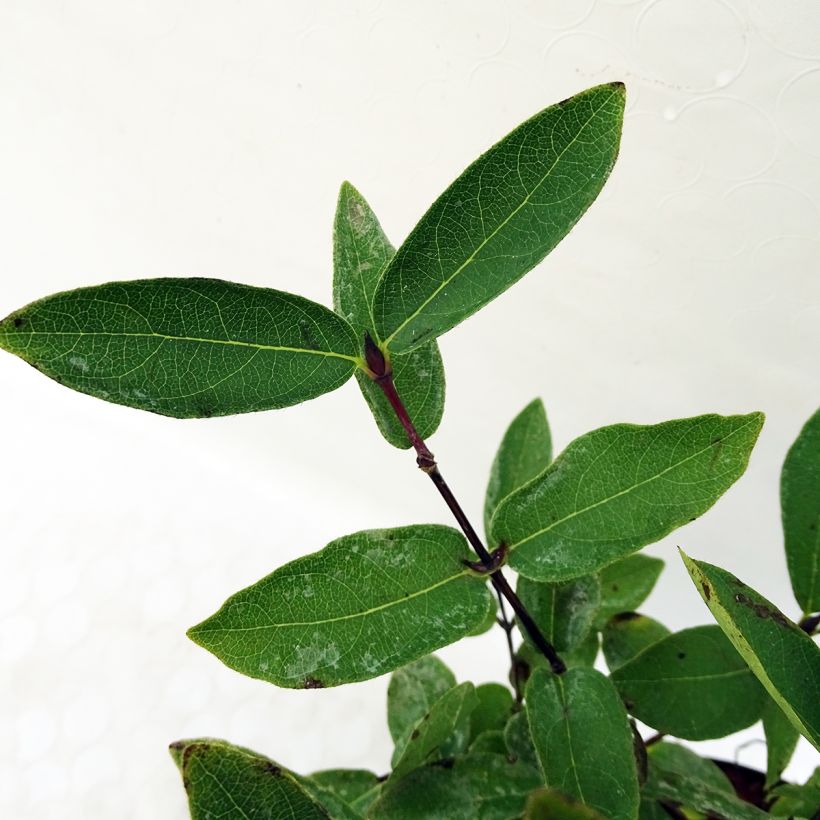

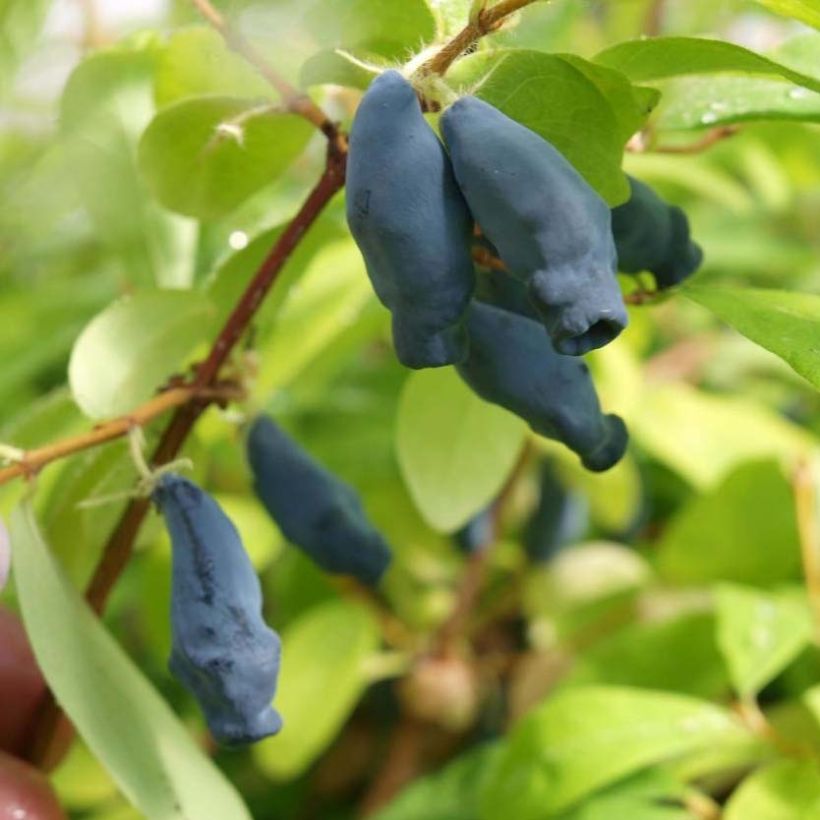

Plant habit
Flowering
Foliage
Botanical data
Lonicera
kamtschatica
Eisbär® 'Polar Bear'
Caprifoliaceae
Blue Honeysuckle, Honeyberry, Sweetberry Honeysuckle, Haskap
Cultivar or hybrid
Other Berries A to Z
Planting and care
Plant Lonicera kamtschatica in spring in a deep, moist, rich and moderately well-drained soil, which is non-calcareous (optimum pH of 5 to 7). Position in a sunny, or slightly shaded, in hot climates. It is well adapted to a wide range of soil textures, ranging from sandy to clay soils, but prefers soils rich in organic matter, which remain moist in summer. It will struggle to grow in shallow and dry soils. Add compost when planting and once a year. Water regularly (preferably with non-calcareous water) and mulch the soil to maintain moisture. After three years, prune to balance the branches and remove dead, weak or diseased wood.
Harvest: The fruits are harvested in late spring, early summer. when the berries turn blue and waxy,. Make sure the flesh is well reddish-purple. If it's green, the fruits are not ripe enough. After 2 or 3 years of cultivation, under good conditions, you can harvest more than 6kg of berries per bush.
Planting period
Intended location
Care
-
, onOrder confirmed
Reply from on Promesse de fleurs
Berries
Haven't found what you were looking for?
Hardiness is the lowest winter temperature a plant can endure without suffering serious damage or even dying. However, hardiness is affected by location (a sheltered area, such as a patio), protection (winter cover) and soil type (hardiness is improved by well-drained soil).

Photo Sharing Terms & Conditions
In order to encourage gardeners to interact and share their experiences, Promesse de fleurs offers various media enabling content to be uploaded onto its Site - in particular via the ‘Photo sharing’ module.
The User agrees to refrain from:
- Posting any content that is illegal, prejudicial, insulting, racist, inciteful to hatred, revisionist, contrary to public decency, that infringes on privacy or on the privacy rights of third parties, in particular the publicity rights of persons and goods, intellectual property rights, or the right to privacy.
- Submitting content on behalf of a third party;
- Impersonate the identity of a third party and/or publish any personal information about a third party;
In general, the User undertakes to refrain from any unethical behaviour.
All Content (in particular text, comments, files, images, photos, videos, creative works, etc.), which may be subject to property or intellectual property rights, image or other private rights, shall remain the property of the User, subject to the limited rights granted by the terms of the licence granted by Promesse de fleurs as stated below. Users are at liberty to publish or not to publish such Content on the Site, notably via the ‘Photo Sharing’ facility, and accept that this Content shall be made public and freely accessible, notably on the Internet.
Users further acknowledge, undertake to have ,and guarantee that they hold all necessary rights and permissions to publish such material on the Site, in particular with regard to the legislation in force pertaining to any privacy, property, intellectual property, image, or contractual rights, or rights of any other nature. By publishing such Content on the Site, Users acknowledge accepting full liability as publishers of the Content within the meaning of the law, and grant Promesse de fleurs, free of charge, an inclusive, worldwide licence for the said Content for the entire duration of its publication, including all reproduction, representation, up/downloading, displaying, performing, transmission, and storage rights.
Users also grant permission for their name to be linked to the Content and accept that this link may not always be made available.
By engaging in posting material, Users consent to their Content becoming automatically accessible on the Internet, in particular on other sites and/or blogs and/or web pages of the Promesse de fleurs site, including in particular social pages and the Promesse de fleurs catalogue.
Users may secure the removal of entrusted content free of charge by issuing a simple request via our contact form.
The flowering period indicated on our website applies to countries and regions located in USDA zone 8 (France, the United Kingdom, Ireland, the Netherlands, etc.)
It will vary according to where you live:
- In zones 9 to 10 (Italy, Spain, Greece, etc.), flowering will occur about 2 to 4 weeks earlier.
- In zones 6 to 7 (Germany, Poland, Slovenia, and lower mountainous regions), flowering will be delayed by 2 to 3 weeks.
- In zone 5 (Central Europe, Scandinavia), blooming will be delayed by 3 to 5 weeks.
In temperate climates, pruning of spring-flowering shrubs (forsythia, spireas, etc.) should be done just after flowering.
Pruning of summer-flowering shrubs (Indian Lilac, Perovskia, etc.) can be done in winter or spring.
In cold regions as well as with frost-sensitive plants, avoid pruning too early when severe frosts may still occur.
The planting period indicated on our website applies to countries and regions located in USDA zone 8 (France, United Kingdom, Ireland, Netherlands).
It will vary according to where you live:
- In Mediterranean zones (Marseille, Madrid, Milan, etc.), autumn and winter are the best planting periods.
- In continental zones (Strasbourg, Munich, Vienna, etc.), delay planting by 2 to 3 weeks in spring and bring it forward by 2 to 4 weeks in autumn.
- In mountainous regions (the Alps, Pyrenees, Carpathians, etc.), it is best to plant in late spring (May-June) or late summer (August-September).
The harvesting period indicated on our website applies to countries and regions in USDA zone 8 (France, England, Ireland, the Netherlands).
In colder areas (Scandinavia, Poland, Austria...) fruit and vegetable harvests are likely to be delayed by 3-4 weeks.
In warmer areas (Italy, Spain, Greece, etc.), harvesting will probably take place earlier, depending on weather conditions.
The sowing periods indicated on our website apply to countries and regions within USDA Zone 8 (France, UK, Ireland, Netherlands).
In colder areas (Scandinavia, Poland, Austria...), delay any outdoor sowing by 3-4 weeks, or sow under glass.
In warmer climes (Italy, Spain, Greece, etc.), bring outdoor sowing forward by a few weeks.

































